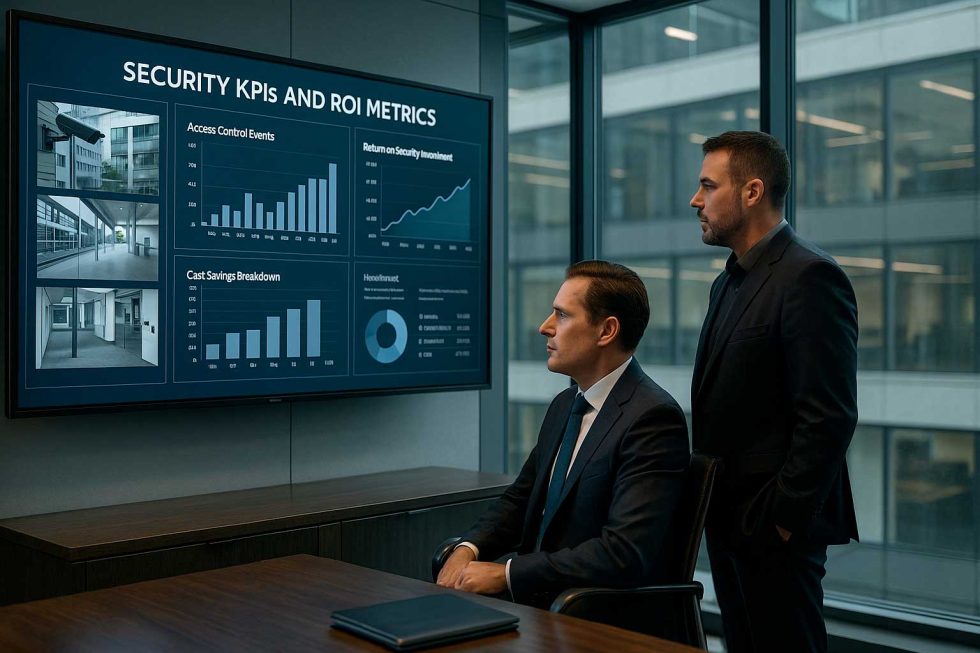How to demonstrate the economic value of strategic security choices
For too long, physical security has been considered an obligatory cost. Something to be budgeted for to protect facilities, employees and infrastructure, but without real attention to measuring the value generated. Today this attitude is no longer sustainable.
CEOs and CFOs, under pressure to optimize every budget item, are increasingly asking security managers:
“What are you bringing us concretely in terms of value?”
The answer can no longer be “let’s avoid problems.”
Today there is a need to demonstrate with data in hand that physical security can become a lever of competitive advantage and a strategic investment with measurable return.
From cost to strategic leverage: the shift in perspective
The real transformation taking place is cultural: security is no longer (only) defense, but also an enabling value for the business. Some examples?
- Reducing theft and damage tocritical assets means safeguarding investments already made.
- Digitizing access controlsorperimeter systems frees up human resources and accelerates productivity.
- Demonstrating regulatory compliance(ISO, AEO, GAMP, etc.) facilitates competitiveness in markets.
- Ensuring business continuitystrengthensresilience and stakeholder trust.
- Integrating security and operationsimproveslogistics, facility and supply chain efficiency.
All this produces real economic value: less waste, fewer unexpected costs, more responsiveness.
How to measure the ROI of physical security
Return on Investment (ROI) in physical security can be calculated by taking into account two dimensions:
- Cost Avoidance:
- Accidents avoided (theft, damage, production downtime)
- Fines or penalties not received
- Lawsuits avoided
- Less costly insurance
- Efficiency Gain:
- Automated processes (access control, visitor logistics)
- Reduction of staff in the presidium
- Faster reaction time = less damage
- Reducing interventions on false alarms
Here are some key KPIs to use:
- Average cost per avoided event
- Number of accidents in a given period (before vs after)
- Estimated value of protected property
- Average response times to an alarm
- Savings on insurance costs
A concrete example: a company in the energy sector, after implementing an advanced smart video surveillance solution, reduced false alarms by 73% and cut nighttime manning costs by 40% in 6 months.
Tools for building an effective business case
To present a security plan as a true investment, the security manager must build a structured business case:
- Current scenario(risks, costs, inefficiencies)
- Concrete goals(event reduction, cost optimization, compliance, etc.).
- Proposed solutions(with budget and ROI estimate)
- Comparing alternatives(indoor vs. outdoor, principals vs. technology)
- Impact on other departments(Operations, IT, Legal, HR)
All accompanied by charts, benchmarks, case studies and tangible KPIs.
This enables CFOs and CEOs to rationally evaluate and approve faster.
The role of the security manager: becoming a strategic interlocutor
Those involved in security today can no longer just manage vendors and oversee systems.
It must evolve into a strategic partner of the enterprise, capable of:
- Speak financial language (costs, investments, benefits)
- Involve internal stakeholders (IT, HR, Compliance)
- Monitor performance (dashboards and monthly reports)
- Anticipate risks and propose scalable solutions
- Working in synergy with external partners to maximize value and control
Only then will the Security function be seen not as an “expense center” but as an “enabling function.”
Conclusion: ROI and credibility walk together
Demonstrating the ROI of physical security is a strategic necessity today.
Those who succeed in doing so gain internal credibility, greater budget autonomy and influence in corporate decision-making processes.
Most importantly, it shows that safety is not only protection, but also performance.



